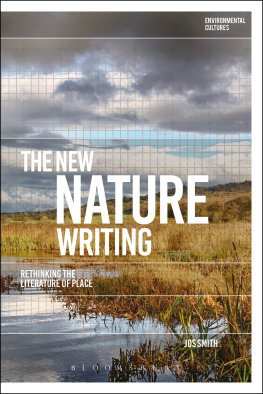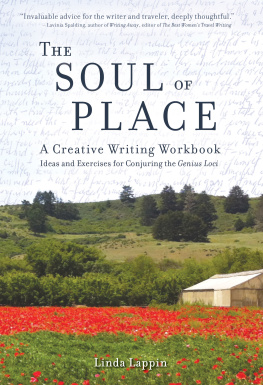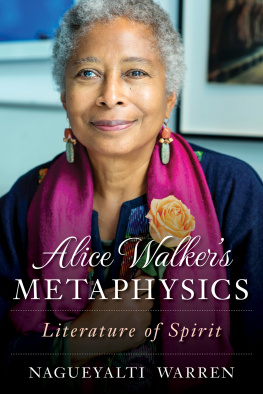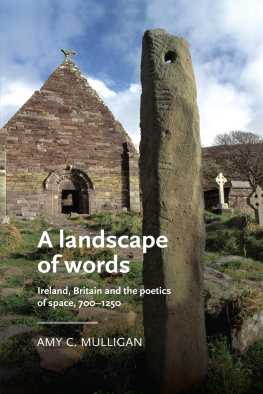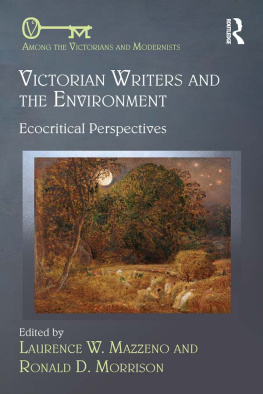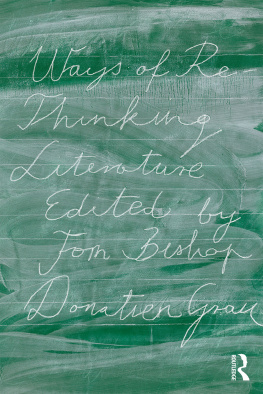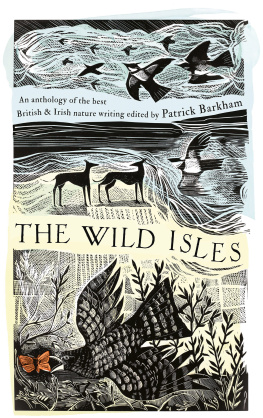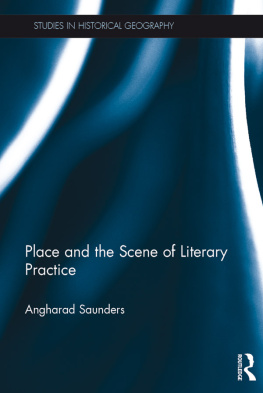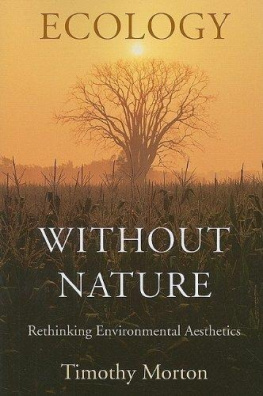The New Nature Writing
Environmental Cultures Series
Series Editors:
Greg Garrard, University of British Columbia, Canada Richard Kerridge, Bath Spa University, UK
Editorial Board:
Franca Bellarsi, Universit Libre de Bruxelles, Belgium
Mandy Bloomfield, Plymouth University, UK
Lily Chen, Shanghai Normal University, China
Christa Grewe-Volpp, University of Mannheim, Germany
Stephanie LeMenager, University of Oregon, USA
Timothy Morton, Rice University, USA
Pablo Mukherjee, University of Warwick, UK
Bloomsburys Environmental Cultures series makes available to students and scholars at all levels the latest cutting-edge research on the diverse ways in which culture has responded to the age of environmental crisis. Publishing ambitious and innovative literary ecocriticism that crosses disciplines, national boundaries, and media, books in the series explore and test the challenges of ecocriticism to conventional forms of cultural study.
Titles available:
Bodies of Water , Astrida Neimanis
Cities and Wetlands , Rod Giblett
Ecocriticism and Italy , Serenella Iovino
Literature as Cultural Ecology, Hubert Zapf
Nerd Ecology , Anthony Lioi
Forthcoming titles:
Civil Rights and the Environment in African-American Literature, 1895-1941 , John Claborn
Climate Crisis and the 21st-Century British Novel , Astrid Bracke
This Contentious Storm: An Ecocritical and Performance History of King Lear , Jennifer Mae Hamilton
The New Poetics of Climate Change , Matthew Griffiths
For my parents, Maggie Yaxley Smith and Chris Smith
The New Nature Writing
Rethinking the Literature of Place
Jos Smith
Bloomsbury Academic
An imprint of Bloomsbury Publishing Plc

Contents
I am indebted to a great many people for their support, encouragement and advice over the last few years as this book has developed, among them Nick Groom, John Brannigan and Andy Brown for responding to drafts of chapters. I would like to thank Andrew McNeillie for his continual support, and for introducing me to Tim Robinsons work. I would like to thank Tim Robinson for answering my stream of questions, and Sue Clifford and Angela King for the long and lively conversations over coffee in Shaftesbury, and Robert Macfarlane and Kathleen Jamie for their thoughtful responses to my inquiries. I am particularly indebted to my fellow editors on The Clearing , Isabel Galleymore, Ben Smith and Luke Thompson, with whom I have discussed at length many of the issues raised in this book. I would also like to thank members of the board of the Atlantic Archipelagos Research Consortium, in particular Nicholas Allen and Fiona Stafford for their encouragement. I am grateful to the editors Neal Alexander of Literary Geographies , Terry Gifford and Anna Stenning of Green Letters and Les Roberts of Humanities , each of whom has cast very keen eyes over aspects of this books argument. I am also grateful to staff at the Bodleian Library and the University of Exeter Special Collections for their help and support. Finally, I am particularly indebted to the Environmental Cultures series editor Richard Kerridge for his wise guidance and advice in preparing this book for publication.
Timothy Drever. Four-Colour Theorum, Kenwood House, 1969.
Tim Robinson. Detail, Map of Aran, 1996 [1980].
One of the things that make Flora Britannica so remarkable is the democratic method Mabey adopted in researching and writing it. He began the book with the characteristically forthright and down-to-earth intention of simply asking British people whether nature had now dwindled to no more than an object of nostalgia in their lives, or whether it was still entwined in their everyday habits and beliefs (qtd. in : 910). Unlike traditional scientific texts on plants and animals that name and describe the species and its likely environment, it collected and published a body of work from the variety of local cultures, ordinary memories and vernacular knowledges that flooded in from the public. The plants became bright focal points around which people felt encouraged to articulate their feelings about place and nature in general (10). The outcome is an historic addition to the canon of British nature writing that, as much as it presents a remarkable image of British flora, also presents a remarkable image of Britain itself, broken down into microcosms of tightly packed cultural history.
Far from showing nature as dwindled to no more than an object of nostalgia as he had feared, peoples accounts of plants, flowers and trees seemed interwoven with modernity in the most surprising ways. One community in Sheffield described fighting to save some quite unlikely rows of Mediterranean fig trees growing on the banks of the River Don. As it turned out, at the height of steel production in the 1920s the river water was used as a coolant in the factories and ran at a fairly constant 20C warm enough for fig seeds washed into the river from sewage outfalls to germinate and thrive. As such, the local people felt these trees were a part of the industrial heritage of the area and worth fighting for (1996: 667). It is a story that shows how trees continue to embody forms of cultural memory and can express and articulate history in the most surprising ways. The proliferation of bright pink rosebay willowherb across areas of London that were badly bombed after the Second World War is another poignant example (1973: 35).
The story of Oxford ragwort describes the spread of the species nationally from a single specimen reputedly gathered from the volcanic rocks of Mount Etna (1996: 376). Escaping the University Botanical Garden in Oxford, seeds made their way, no doubt by gusts of wind or carried in folds of clothing, to the local railway station and are thought to have proliferated along the granite-chipped arteries of the Great Western Railway to become the most abundant ragwort in most British cities. It is a story that suggests some of the adaptability and mobility of the modern plant life that we pass every day without a thought. There is the story of a 250-year-old sweet chestnut tree on George Green in Wanstead. This tree became a powerful symbol of the battle to resist the building of the M11 link road in 1993 when conflicts between police and road protestors were at their height. The tree itself was occupied by protestors from June until it was felled in December that same year. Those inhabiting the tree received some four hundred letters of support (9). Flora Britannica is a book that has helped to set a bewilderingly original benchmark for British nature writing, keeping it at once firmly rooted in the popular cultures of everyday life and reaching for innovative new literary forms, challenging the long tradition to adapt with a keen eye on the challenges of a changing modern world.
In thinking about books like this, and others like The Unofficial Countryside (published as early as 1973), it is hard to hear talk of the New Nature Writing in the twenty-first century without wondering if, in fact, much of the best of what is New today might not have already been going on for some time. When Jason Cowley identified and named the New Nature Writing in 2008, it was on the back of a wave of reviews in the national presses of books such as Robert Macfarlanes The Wild Places (2007), Kathleen Jamies Findings (2005) and Mark Cockers Crow Country (2007) (as well as Richard Mabeys own Nature Cure (2005)). Some reviewers had identified what they were calling a resurgent interest (that there was nothing in this new form to suggest a radical departure from the practice and preoccupations of its antecedents (2010: n.p.).

